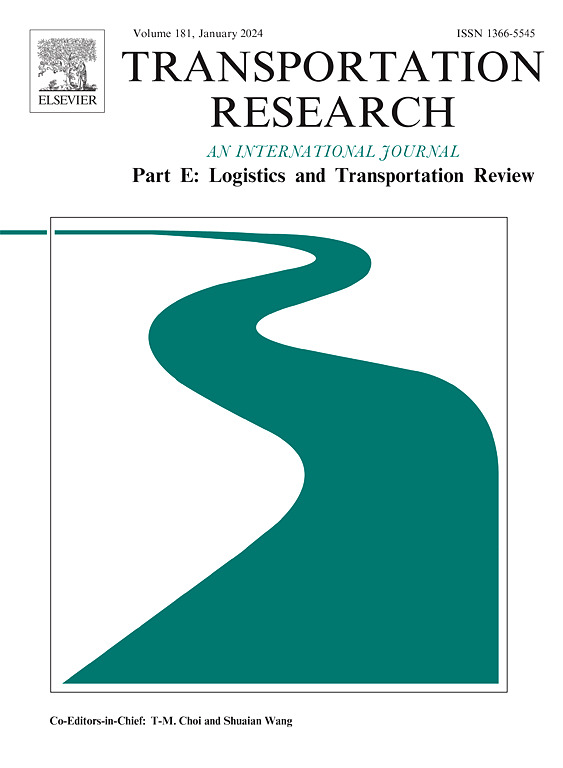Should live streaming be adopted for agricultural supply chain considering platform’s quality improvement and blockchain support?
IF 8.3
1区 工程技术
Q1 ECONOMICS
Transportation Research Part E-Logistics and Transportation Review
Pub Date : 2025-01-30
DOI:10.1016/j.tre.2024.103950
引用次数: 0
Abstract
Platforms empower farmers to address the quality and safety issues of agricultural products by offering blockchain technology and improving product quality. Recently, live streaming becomes a new sales channel to sell products, and plays a key role in enhancing the visibility of agricultural products and introducing detailed information of agricultural products in real time. This disrupted the long-term cooperative relationship between the platforms and farmers. Based on this, our paper explores that whether and how the agricultural supply chain members should adopt the live streaming channel. We build a game model that consists of a farmer, a platform, and an influencer, and investigate the live streaming introduction strategies in the agricultural supply chain in the context of the platform assisting the farmer (the improvement of quality level and adoption of blockchain). We capture two characteristics of the live streaming channel, i.e., the live streaming channel’s impact on market size (live streaming value) and additional profit per unit product derived from the influencer’s personal influence (influencer value). We interestingly find that when the live streaming value is low, introducing live streaming negatively impacts the farmer’s profit at the low influencer value in the farmer’s live streaming. When the live streaming value is low (high), introducing live streaming damages the platform’s profit at the moderate (low) influencer value in the platform’s live streaming. Therefore, adopting the live streaming channel is not necessarily profitable for agricultural supply chain members. We also extend our model to check the robustness of our findings. This study is the first to explore live streaming introduction strategies in the agricultural supply chain in the context of the platform assisting the farmer, and significantly contributes to the literature and provides valuable guidance for farmers and platforms on when to adopt the live streaming channel in the agricultural supply chain.
求助全文
约1分钟内获得全文
求助全文
来源期刊
CiteScore
16.20
自引率
16.00%
发文量
285
审稿时长
62 days
期刊介绍:
Transportation Research Part E: Logistics and Transportation Review is a reputable journal that publishes high-quality articles covering a wide range of topics in the field of logistics and transportation research. The journal welcomes submissions on various subjects, including transport economics, transport infrastructure and investment appraisal, evaluation of public policies related to transportation, empirical and analytical studies of logistics management practices and performance, logistics and operations models, and logistics and supply chain management.
Part E aims to provide informative and well-researched articles that contribute to the understanding and advancement of the field. The content of the journal is complementary to other prestigious journals in transportation research, such as Transportation Research Part A: Policy and Practice, Part B: Methodological, Part C: Emerging Technologies, Part D: Transport and Environment, and Part F: Traffic Psychology and Behaviour. Together, these journals form a comprehensive and cohesive reference for current research in transportation science.

 求助内容:
求助内容: 应助结果提醒方式:
应助结果提醒方式:


